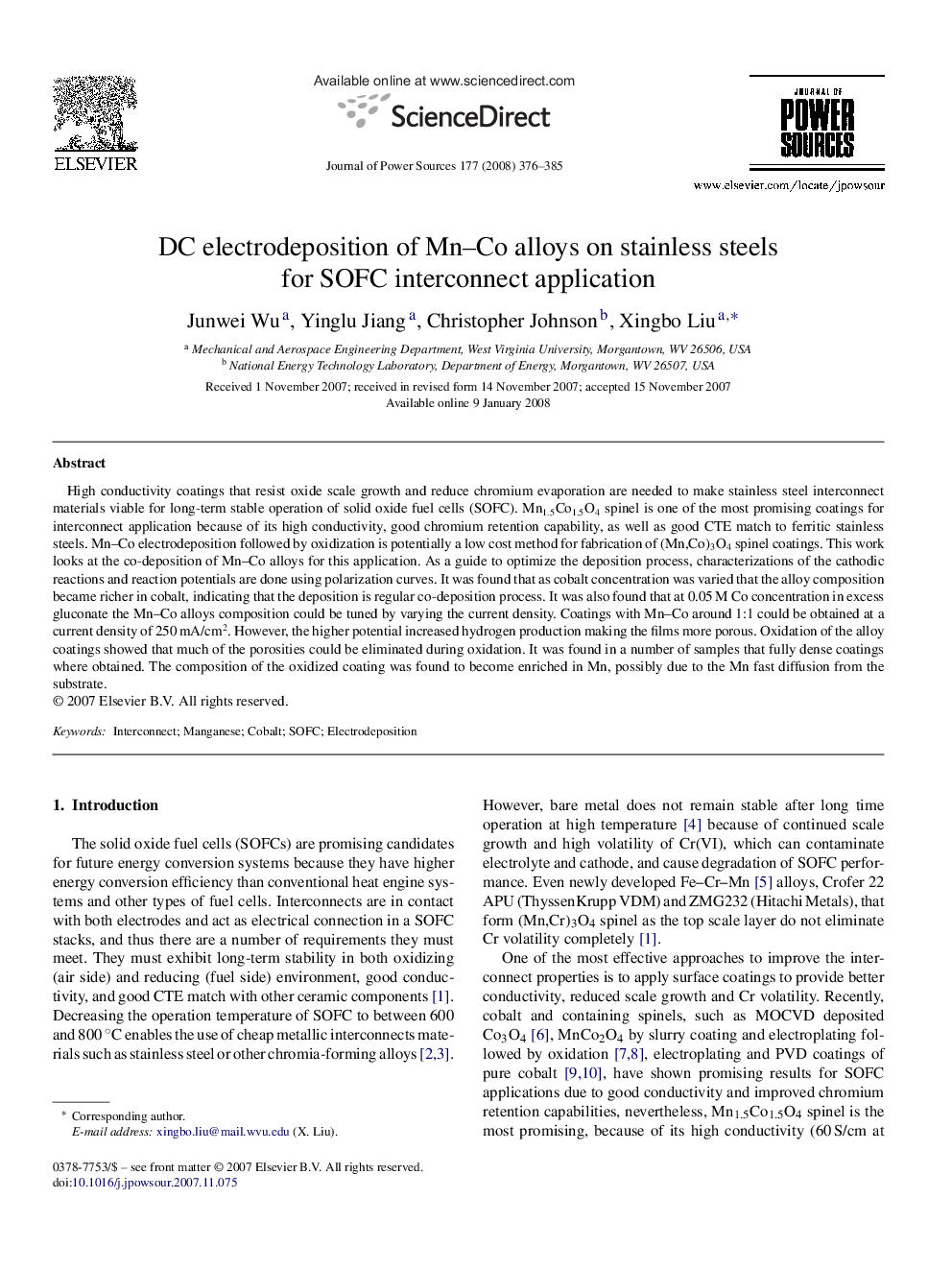| Article ID | Journal | Published Year | Pages | File Type |
|---|---|---|---|---|
| 1285585 | Journal of Power Sources | 2008 | 10 Pages |
High conductivity coatings that resist oxide scale growth and reduce chromium evaporation are needed to make stainless steel interconnect materials viable for long-term stable operation of solid oxide fuel cells (SOFC). Mn1.5Co1.5O4 spinel is one of the most promising coatings for interconnect application because of its high conductivity, good chromium retention capability, as well as good CTE match to ferritic stainless steels. Mn–Co electrodeposition followed by oxidization is potentially a low cost method for fabrication of (Mn,Co)3O4 spinel coatings. This work looks at the co-deposition of Mn–Co alloys for this application. As a guide to optimize the deposition process, characterizations of the cathodic reactions and reaction potentials are done using polarization curves. It was found that as cobalt concentration was varied that the alloy composition became richer in cobalt, indicating that the deposition is regular co-deposition process. It was also found that at 0.05 M Co concentration in excess gluconate the Mn–Co alloys composition could be tuned by varying the current density. Coatings with Mn–Co around 1:1 could be obtained at a current density of 250 mA/cm2. However, the higher potential increased hydrogen production making the films more porous. Oxidation of the alloy coatings showed that much of the porosities could be eliminated during oxidation. It was found in a number of samples that fully dense coatings where obtained. The composition of the oxidized coating was found to become enriched in Mn, possibly due to the Mn fast diffusion from the substrate.
